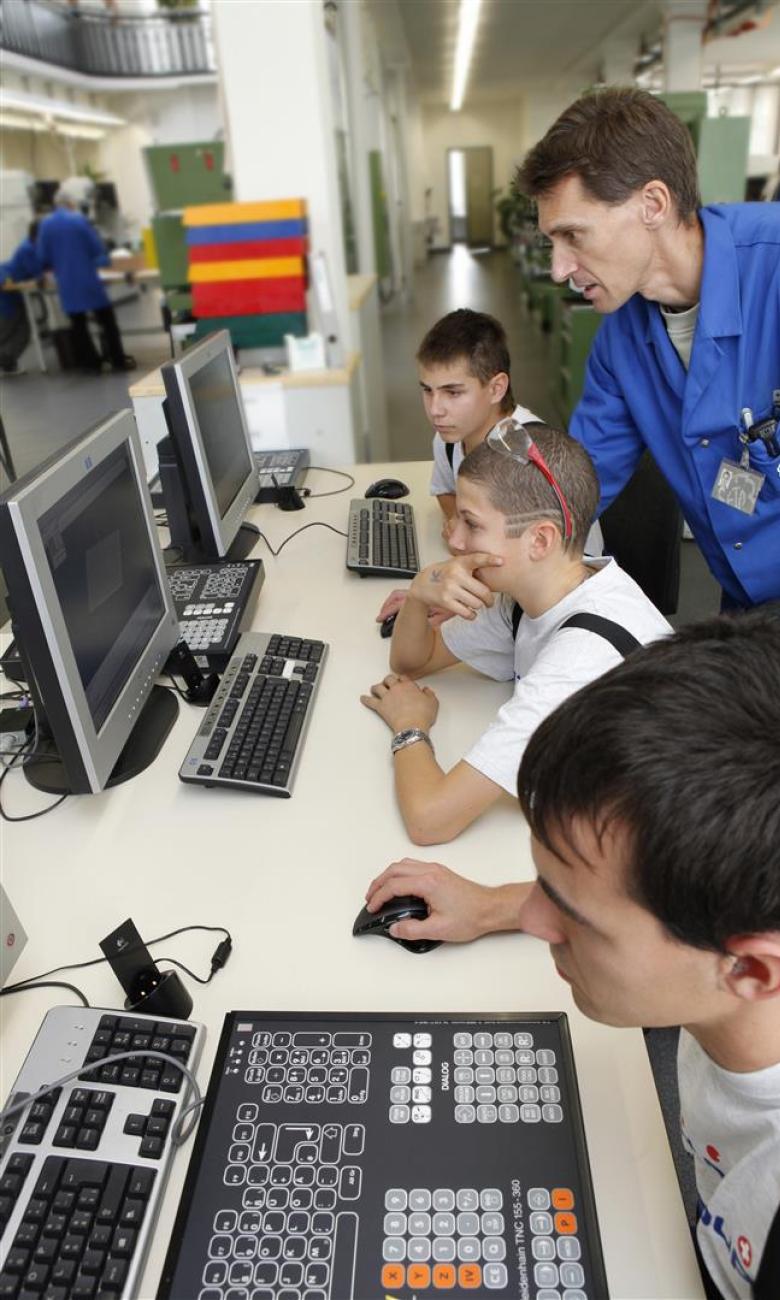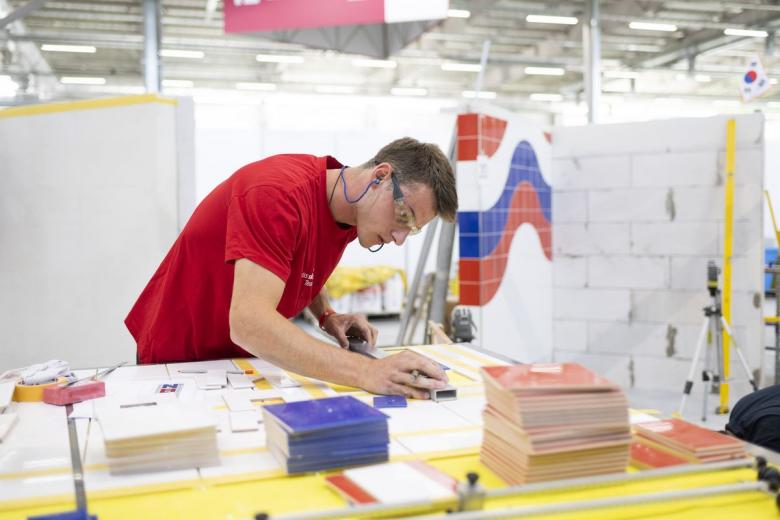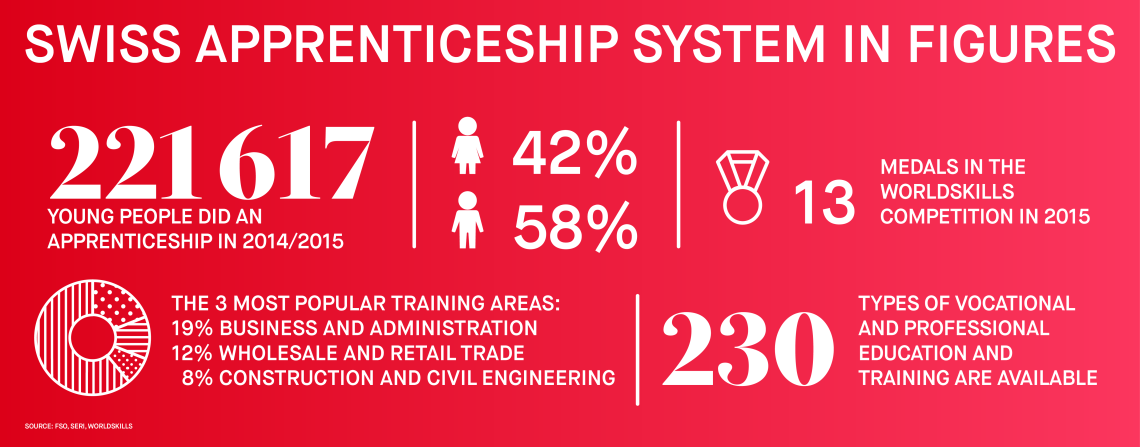Apprenticeships the recipe for Swiss success
In Switzerland, vocational education and training (VET) is highly valued and allows young people to learn a trade by combining classroom study with in-company work. More and more countries are taking an interest in this model, which is an effective tool for combating unemployment.
The good health of the Swiss economy, with unemployment rates not exceeding 4% for example, is due in particular to the quality of the VET system, which is geared to labour market needs and integrated into the education system.
At the end of their compulsory education, Swiss youngsters have a choice between continuing their studies and opting for VET. In most cases, this is 'dual' VET, meaning that it combines school with practical experience. The basic in-company apprenticeship involves spending three or four days a week in the workplace combined with classroom learning at a vocational school. The training, during which the apprentice is paid by the employer, lasts between two and four years, at the end of which the apprentice receives a Federal VET Diploma or Federal VET Certificate. The former apprentice can then go straight into the labour market or enter higher education. Many managers of Swiss small and medium-sized enterprises have followed this route.

Individuals with a VET qualification have more chance of finding a job than those without one. "Someone who has completed an apprenticeship is three times less likely to become unemployed or be without work for a long period," writes Swiss politician Rudolf Strahm in his book Le mirage des longues études (Slatkine, 2016), marshalling statistics to back up his argument. The former socialist National Councillor, who himself started his career with an apprenticeship as a laboratory assistant, also points out that the five European countries that make use of a dual system of vocational education and training (Switzerland, Germany, Austria, the Netherlands and Denmark) have lower unemployment rates than their counterparts.

The choice of an apprenticeship
An apprenticeship meant that after a period doing other things, Léa Graham found a job in the kitchen of one of the world's top restaurants, 'Le Restaurant de l'Hôtel de Ville' in Crissier. This Swiss restaurant came first in the 2016 list of the 1000 best restaurants in the world and fourth in the 2017 list. "I'd always wanted to work in a restaurant," says Léa from Vaud. "But at the end of my compulsory education, my family and friends dissuaded me from following that route, which they thought was too hard, and encouraged me to enrol for baccalaureate school instead."
Léa followed the advice of those around her. She finished baccalaureate school, where she specialised in visual arts, and then went on to study at Geneva School of Art and Design (HEAD). Having obtained her bachelor's degree, she decided to realise her childhood dream anyway and started an apprenticeship as a cook.

In the course of this new training programme, she changed restaurant twice before completing her apprenticeship at the 'École professionnelle de Montreux' (Montreux vocational school), where she was given the chance to work once a week at 'Le Restaurant de l'Hôtel de Ville' in Crissier. At the end of her training, the restaurant hired her - and it has to be said that Léa put her heart into her work: in 2015, she was named best apprentice cook in the canton of Vaud. "The apprenticeship gave me the opportunity to ease gradually into working life, which was welcome given the stressful nature of working in a kitchen," she acknowledges.
Interest beyond our borders
More and more other countries, seeking ways to combat unemployment, are taking an interest in the Swiss VET system. "The number of enquiries from foreign countries and other players abroad expressing an interest in the Swiss system has increased dramatically in recent years. Sometimes they want to find out more information, while in other cases they would like to cooperate with Switzerland in this area," indicates State Secretariat for Education, Research and Innovation (SERI) project manager Jérôme Hügli.
The Swiss model is part of a complex overall picture, including social dialogue, a learning culture and the country's three levels of federalism. "It is impossible to simply replicate the Swiss system in another country with a different socio-economic and cultural background," says Jérôme. "However, it is possible to tailor some key aspects to the specific context of a given country. This obviously requires an in-depth analysis and a willingness on the part of the partner country to embark on a long-term process."

What problems are generally encountered? "In many countries, VET often suffers from a poor image or reputation, requiring a lot of work with the target groups (young people, parents, teachers, and so on)," explains Jérôme. "The increasing role of the private sector in VET is another aspect that poses a problem in many cases. The government should allow economic players to have more influence on VET. At the same time, businesses and economic players must see some benefit in getting involved in this area. Working on those aspects is the key to success, but it takes a long time."






